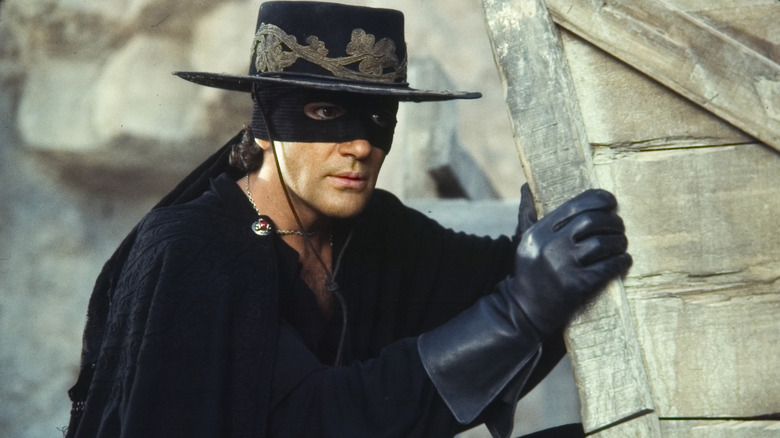The Mask of Zorro (1998): A Swashbuckling Revival of a Classic Hero
The Mask of Zorro, directed by Martin Campbell and released in 1998, is a modern take on one of cinema’s most enduring masked heroes. Set in 19th-century California, the film revitalizes the legend of Zorro with a blend of action, romance, and humor. Anchored by strong performances and thrilling swordplay, it balances old-school adventure with a fresh sense of energy, making it one of the most beloved action-adventure films of the late 1990s.
The film begins with Don Diego de la Vega (played by Anthony Hopkins), the original Zorro, being unmasked and imprisoned by the corrupt Spanish governor Don Rafael Montero. After 20 years in captivity, de la Vega escapes and discovers that Montero has raised his daughter Elena (Catherine Zeta-Jones) as his own. De la Vega then trains a new Zorro, Alejandro Murrieta (Antonio Banderas), a reckless bandit with a thirst for revenge against Captain Love, Montero's brutal right-hand man who killed Alejandro’s brother.

Banderas brings charm, charisma, and athleticism to the role of Alejandro, creating a Zorro who is both roguish and heroic. His transformation from a petty outlaw to a disciplined and principled swordsman gives the film emotional weight and allows audiences to root for his redemption. Hopkins, portraying the elder Zorro, adds gravitas and warmth, while Zeta-Jones, in a breakout role, delivers a confident and spirited performance as Elena. Her chemistry with Banderas is electric, and their swordfight-turned-flirtation is one of the film’s most memorable scenes.
Visually, The Mask of Zorro is a feast of sun-drenched landscapes, ornate costumes, and dynamic action sequences. The sword fights are crisply choreographed, blending Hollywood spectacle with classical fencing elegance. Director Martin Campbell—known for revitalizing the James Bond franchise with GoldenEye—brings a similar vigor here, using sweeping camera movements and quick pacing to maintain excitement throughout. The film’s score, composed by James Horner, elevates the emotional moments and adds a romantic flair to the action.

At its core, The Mask of Zorro is about legacy, justice, and identity. By passing the mask from one generation to another, the story explores themes of mentorship, sacrifice, and moral responsibility. While firmly an adventure film, it also acknowledges the historical backdrop of colonial oppression and class division, adding a layer of depth beyond its swordplay.
Critically and commercially successful, the film was praised for its mix of humor, heart, and high-stakes adventure. It was particularly lauded for revitalizing a classic character without losing the swashbuckling spirit that made Zorro iconic. The performances, particularly Banderas’ and Zeta-Jones’, helped catapult them to international stardom. The movie later spawned a sequel, The Legend of Zorro (2005), though it failed to recapture the original’s critical acclaim.
In summary, The Mask of Zorro is a rousing, well-crafted adventure that succeeds in reintroducing a timeless hero to a new generation. With its compelling characters, spirited action, and romantic undertones, the film stands as a high point in modern swashbuckler cinema and remains a fan favorite decades after its release.
-1751708011-q80.webp)

